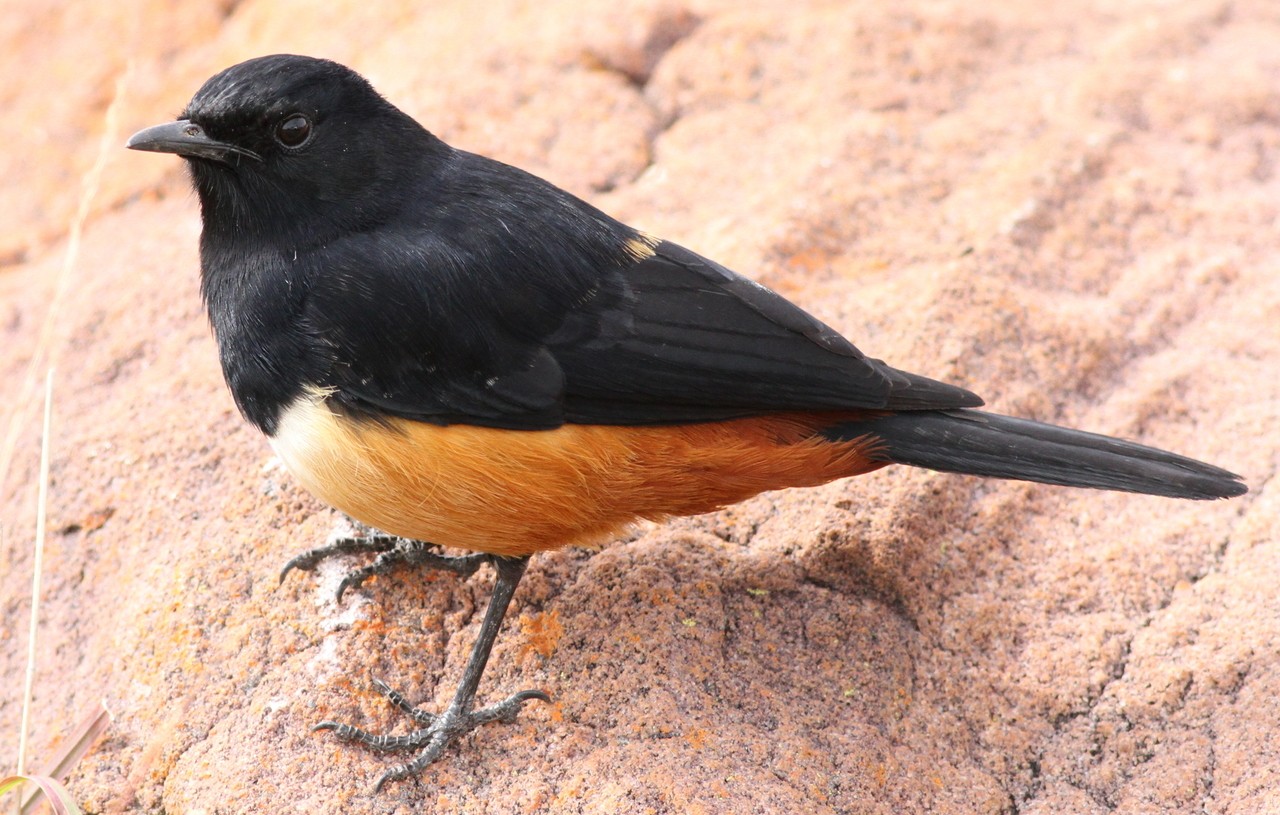Mocking Cliff Chat
A species of Cliff Chats Scientific name : Thamnolaea cinnamomeiventris Genus : Cliff Chats
Mocking Cliff Chat, A species of Cliff Chats
Botanical name: Thamnolaea cinnamomeiventris
Genus: Cliff Chats
Content
Description General Info
Description
The mocking cliff chat is a large chat with distinctive colouration. The male has a glossy black with a chestnut belly, vent, and rump and white shoulder patches. The shoulder patches vary in size geographically. The female is dark grey with a chestnut lower breast, belly, and vent. The mocking cliff chat has a length of 19–21 cm and weigh 41–51g. 
Size
21 cm
Nest Placement
Tree
Feeding Habits
Mocking Cliff Chat primarily consumes figs, particularly from the Ficus ingens tree, insects such as flying ants, spiders, and even aloe nectar. Mocking Cliff Chat forages in trees and on the ground, often using a tree as a perch to swoop down on prey and is also known to scour among rocks and tussocks near water sources.
Habitat
Mocking Cliff Chat favors rugged terrains within wooded cliffs, kopjes, and gorges, predominantly in woodland or savanna regions rich in fig trees. They adapt well to anthropogenic structures and can reside at altitudes from 600 to 2440 meters. Despite a preference for vegetated areas, they are also found in arid, rocky zones without woody plants.
Dite type
Insectivorous
General Info
Feeding Habits
Bird food type
Distribution Area
The mocking cliff chat occurs in a neat band from central Ethiopia in the north through east Africa into Zimbabwe, south-eastern Botswana, southern Mozambique and eastern South Africa as far as the far east of Western Cape province. Mostly resident but in the south of its range tends to move to lower altitudes in the winter months. 
Species Status
Not globally threatened.
Scientific Classification
Phylum
Chordates Class
Birds Order
Perching birds Family
Old world flycatchers Genus
Cliff Chats Species
Mocking Cliff Chat 